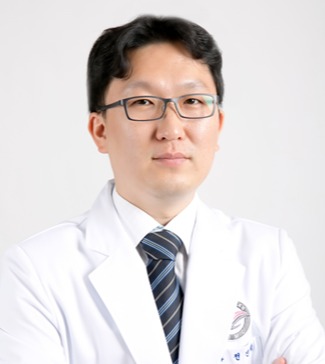Brain “neural stem cells” are known as the only cells to maintain homeostasis and, when damage occurs, differentiate into neurons, astrocytes, and oligodendrocytes to regenerate tissue.
There are two methods for regenerating nerves in brain-injured areas: activating intrinsic stem cells and transplanting cells from external sources.

Among these, establishing clear treatment timelines or mechanisms for activating intrinsic cells has not yet been achieved, making clinical application challenging. Currently, transplanting neural stem cells from external sources is the most effective treatment method receiving attention.
Against this backdrop, a joint research team led by Professor Jeon Jin-pyeong and Dr. Kim Jong-tae of the Department of Neurosurgery at Hallym University Chuncheon Sacred Heart Hospital and Professor Kang Sung-min of Sangmyung University announced on Monday that they have discovered that highly purified neural stem cells isolated from the brain can migrate to the site of brain damage through vascular endothelial cells.
The researchers conducted a study using high-purity neural stem cells isolated from mouse brains to elucidate the cellular migration mechanism to the site of brain injury. They then transplanted neural stem cells along with hydrogel into a mouse with traumatic brain injury and observed the progression over four weeks.
The results showed that neural stem cells expressing green fluorescent markers migrated to the damaged area and differentiated into neurons. It suggests that neural stem cells can be guided to the damaged area through a specific mechanism.
Experiments using hydrogels composed of fibrin and collagen demonstrated that neural stem cells exhibited excellent mobility. Through interactions with vascular endothelial cells and microglia, they exhibited similar mobility characteristics, even in environments similar to those found in brain injury. It was confirmed that neural stem cells have the ability to self-regulate the surrounding extracellular matrix (structures surrounding cells) even in such environments.
The research team found that delivering high-purity neural stem cells and vascular endothelial cells in a mesh-shaped hydrogel to the damaged area could dissolve blood clots and promote the regeneration of damaged blood vessels and axons, thereby providing practical benefits for the recovery of neural function.
In addition, the team suggested that attempting to amplify and culture highly purified neural stem cells found in the brain using a three-dimensional culture method outside the body could be applied to the treatment of intractable cerebral hemorrhage. This is expected to lay the foundation for the development of new treatments.
“This study focused on the fact that the efficacy of neural stem cell therapy using hydrogel depends on rapid vascularization after transplantation, and we concentrated on developing a mesh structure platform to maximize therapeutic effects,” Professor Jeon said. “We expect that this technology will be further developed using various stem cells to create customized hydrogels, which could be applied to the treatment of various diseases, including intractable brain hemorrhages.”
The study’s findings were published as a featured article in the latest issue of the international journal APL Bioengineering (I.F. = 6.6) with the title, “Advanced hydrogel mesh platform with neural stem cells and human umbilical vein endothelial cells for enhanced axonal regeneration.”
This research was conducted with funding from the Ministry of Science and ICT through the National Research Foundation of Korea under the project, “Artificial Intelligence Digital Health Platform for Comprehensive Management of Cerebrovascular Diseases” (No. RS-2022-NR070859), and “Hallym University Medical Center Might Hallym 4.0 Disease Conquest Project.”

